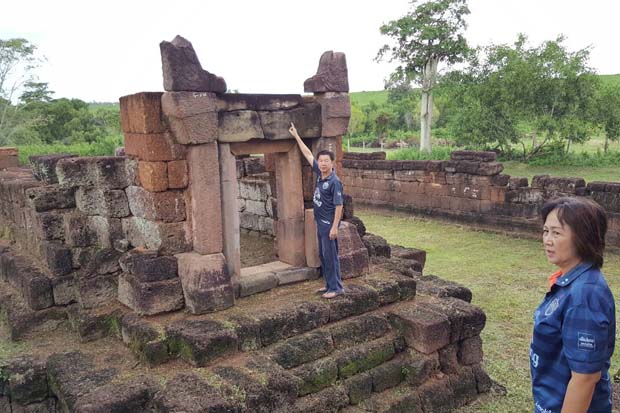
Thailand should employ the same tactic that enabled the country to successfully reclaim the famous reclining Vishnu lintel from the US in the 1980s in pressing for the return of an ancient artefact now on display at a San Francisco museum, a Fine Arts expert Sahawat Naenna said.
Early last month, the people's sector in Buri Ram stepped up a call for the Thai government to demand a return of the artefact, a pre-Angkorean lintel featuring Yama, the God of Death, from the Chong Moon Lee museum which put the origin of the artefact as coming "from Nong Hong temple, in Non Dindaeng district, Buri Ram."
The museum has not replied to a request for comments by the Bangkok Post.
By law, Thailand is at a disadvantage and may not be able to fight for the return of artefacts possessed by foreign institutes as the country is not a signatory state of the 1970 Convention on the Means of the Prohibiting and Preventing the Illicit Import, Export and Transfer of Ownership of Cultural Property. In the Vishnu lintel case, Thailand strenuously used social pressure in claiming the artefact back from the US which is a signatory state.
The country used old photos of the lintel, taken by archeologist Manit Vallibhotama in 1960-61, when it was at Phanom Rung sanctuary before it disappeared. The photos which are part of Manit's report of Khmer-style temples in the Northeast, became an evidence that the object belonged to Thailand before it was smuggled.
By that time, Mr Sahawat who is former Fine Arts chief, said the Chicago Art Institute did not need to succumb to Thailand's demand given the country's lack of legal right in pursuing the case but it eventually did.
The Buri Ram-based people's sector spearheaded by Tanongsak Harnwong insisted that the two cases are similar and the fight for the return should be possible. The photos of the Nong Hong lintel were the same set taken by Manit for his report.
"The photos show this lintel was at the Nong Hong temple before it was stolen," said the businessman-turned-conservationist who filed a petition with the Fine Arts Department to take action. The fact that the museum attributed Buri Ram as the origin of the lintel should give Thailand some advantage in the fight, he added.
Anandha Chuchoti, chief of the Fine Arts Department, said on Tuesday the picture of the Nong Hong lintel taken by the late Manit is valid evidence in pursuing the return of the artefact.
But it will be a long fight, he said, citing the Vishnu lintel case which lasted more than a decade even though it involved such archaeological heavyweights like the late MC Subhadaradis Diskul.
The department was studying legal aspects of the case, and also the possibility of Thailand ratifying the convention, with the help of the Foreign Affairs Ministry, said Mr Anandha.


